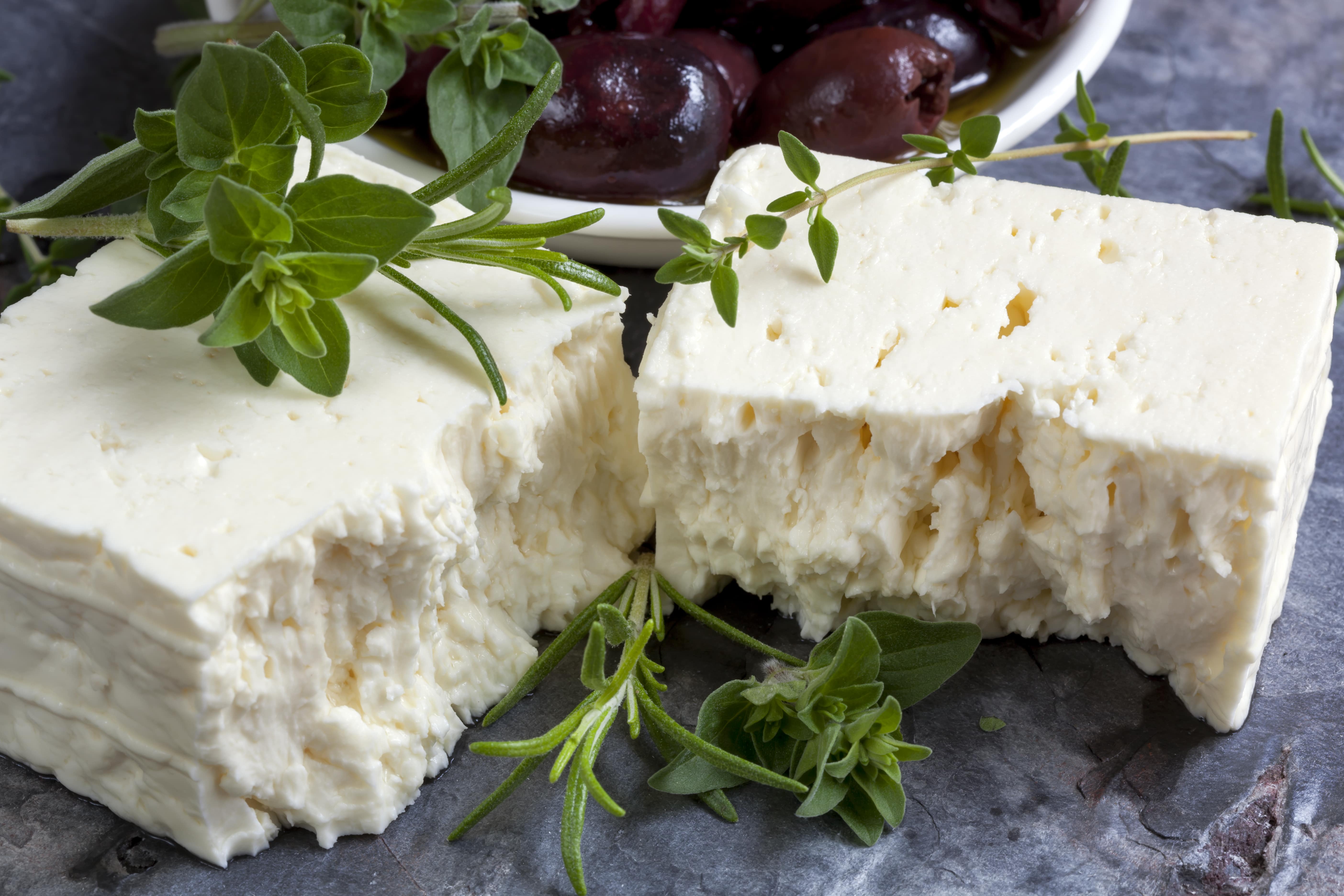Feta Cheese, the queen of cheese with a Greek passport
Feta cheese is starring in many dishes, highlighting Greek cuisine in a unique way. It took its name from being cut in large triangular slices. Feta in Greek means slice. It is a white cheese made from goat’s milk that matures in brine.
The first historical evidence of feta was found in the Byzantine Empire, where we find the word “recent” (which means fresh). It is closely associated with Crete where an Italian traveller to Kantia, today’s Heraklion region, mentions in his writings from 1494 the procedures of feta brine curing, trading and storage. The word ‘slice’ has an interesting genealogy. It comes from the Italian word fetta, which means slice-piece, a word that has its roots in Latin, from offa (meaning bite or crumb). It first appeared in Greek in the 17th century, possibly referring to the practice of slicing cheese in order to place the slices into barrels. However, many authors attribute a Greek origin to feta cheese, where according to Homer, Cyclops Polyphemus was the first to have made it. In the Delphi Museum, 6th century BC artefacts depict the feta production process. It is made exclusively from sheep’s or goat’s milk, i.e. a mixture of up to 30% goat’s milk. It is stored in brine or sour milk for about 3 months. Feta cheese varies depending on its hardness and it based on the texture it can be hard, medium or soft.
Feta was patented as a PDO product only in 2002. The name ‘Feta’ can no longer be used in cheeses of similar composition, made outside or even within Greece, but with a composition and production process other than the traditional one.
Feta is consumed on its own, with oil and oregano, in salads, pies and other foods or baked with herbs and chili flakes or in honey crust sheets. The delightful hospitable Greek table holds a special place in feta cheese, giving it undoubtedly the honours that a queen would envy.
